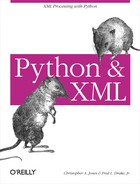What Does ebXML Offer?
Electronic Business XML (ebXML) was formed to improve upon the EDI standard, and level the playing field between trading partners. The OASIS consortium, along with the United Nation’s UN/CEFACT body, formed ebXML as a collaborative effort, and published information concerning ebXML at http://www.ebxml.org/.
So what does ebXML signify for programmers? In reality, it means a complex set of documents and even more complex set up of transactional document flows. Adopting ebXML means adopting not only a dialect of document instances, but a business process modeling flow to connect things together.
ebXML Document Structure
The dialect portion of ebXML deals with message formats. The specification puts forth guidelines that must be used when creating ebXML documents. Simple structure is used in ebXML. The specification requires that element and attribute names follow a standard capitalization arrangement, similar to Java names. Using a scheme described as upper and lower camel-case, ebXML element and attribute names have the following capitalization format:
<MyElementName myElementAttribute="..." myOtherElementAttr="...">
Additionally, underscores ( _
), periods (.), and dashes
(-) are not allowed in element or
attribute names, though they are legal in general XML.
Business Process and Modeling
In ebXML, business process and information modeling is not mandatory. But if it is used, it is required to be UMM (UN/CEFACT Modeling Methodology). This is a modeling language that uses UML (Unified Modeling Language), which is commonly used in object-oriented programming design.
The UMM approach separates operational and functional views and relies on two “view” constructs: the Business Operational View (BOV) and the Functional Service View (FSV). The operational view covers such things as the semantics involved in a transaction, as well as operational conventions, agreements, and arrangements. The functional view covers logistical and technological items such as user interfaces, data transfer interfaces, and capabilities for discovery and implementation runtime scenarios.
It is not a requirement that all adopters of ebXML utilize every aspect of the business modeling support. As a developer, you may choose to standardize upon a set of documents, but choose not to implement the routing and business logic these documents seem to suggest.
Phases of ebXML
Adopting new technology and business processes is a tough challenge. ebXML has defined phases of adoption that include considerations for the changes businesses usually undergo. Phases of ebXML are broken down into the Implementation phase, the Discovery and Retrieval phase, and an operational Run Time phase.
Items in the Implementation phase deal directly with creating an application of the ebXML infrastructure. In this scenario, a trading partner uses the Core and Business Libraries, coupled with any business process information of the other trading partners from the ebXML Registry.
Once you have implemented an ebXML business service interface, you can begin the Discovery and Retrieval phase. The discovery process is an attempt to understand the meaning of the information being requested and retrieving it as necessary.
The Run Time phase is where actual ebXML messages are being exchanged to support a transaction.
